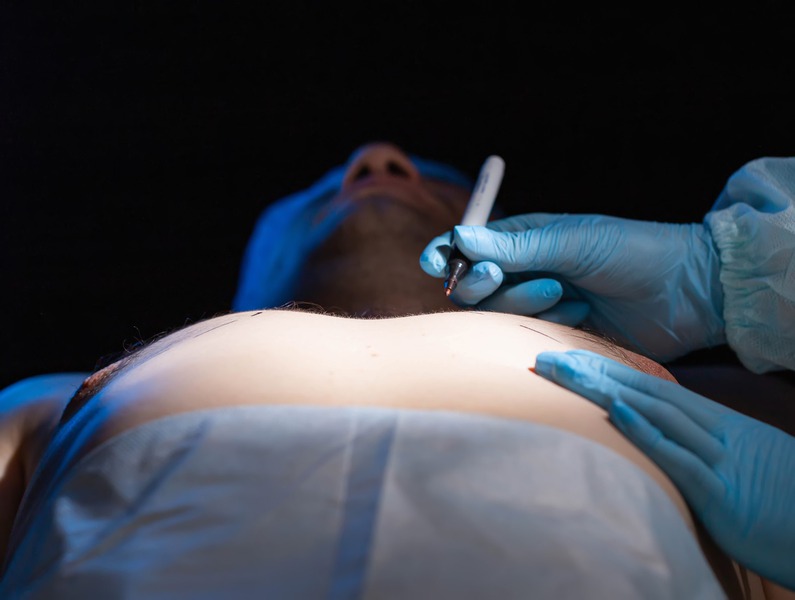
What Symptoms Should I Look for If I Think I Have Gynecomastia?
August 6, 2024Concerns about changes in physical appearance can often prompt a sense of unease. For men experiencing signs of breast tissue enlargement, determining whether these changes are a case of gynecomastia can be somewhat bewildering. Recognizing the symptoms is the first step to understanding and addressing this condition.
Defining Gynecomastia
Gynecomastia is a condition characterized by the enlargement of breast tissue. It is a common occurrence, impacting a significant number of males at various stages of their lives. Understanding the clinical presentation of gynecomastia is essential in differentiating it from other possible causes of breast enlargement, like pseudogynecomastia, which is attributable to fat deposition rather than breast tissue proliferation.
The term gynecomastia specifically pertains to the enlargement of glandular tissue in the breast, separate from obesity-related breast tissue enlargement. It is a benign condition, but it signifies an imbalance in the body’s estrogen and testosterone levels.
Visible Symptoms of Gynecomastia
The most direct symptoms of gynecomastia are visible changes to the chest. These can often be spotted in the mirror and include:
-
Enlargement of one or both breasts, which may develop unevenly
-
Presence of breast tenderness or sensitivity to touch
-
Skin around the breast showing signs of dilated pores or stretching
These physical alterations can cause discomfort and also have a psychological impact due to changes in body image. Men may notice a distinct puffiness or protrusion of the nipple area, which can become particularly apparent when wearing tight-fitting shirts or during physical activities.
Physical Sensations and Gynecomastia
Aside from visual signs, gynecomastia is often accompanied by tactile symptoms. These sensations can be clues that alert a person to the presence of the condition:
-
A palpable mass of tissue beneath the nipple, which can have a rubbery or firm texture
-
Symmetrical or asymmetrical growth occurs within the tissues of the breast
-
An overall sense of weight or drag in the breast region, particularly noticeable when bending over or engaging in physical exercise
Should these symptoms appear, it is recommended to monitor them for progression and seek medical advice for proper diagnosis and management.
Emotional and Psychological Symptoms
Beyond the physical, gynecomastia can introduce emotional and psychological symptoms due to body image concerns, especially in social or intimate situations. It can lead to:
-
Feeling of self-consciousness or embarrassment
-
Avoidance of situations requiring chest exposure, such as swimming or gym activities
-
Reduced self-esteem and potential withdrawal from social interactions
These emotional responses are an important aspect of the overall experience of gynecomastia and should be taken into account when considering treatment options.
When to Seek Professional Advice
If you are noticing signs that may indicate gynecomastia, it is important to take certain steps to ensure proper diagnosis and treatment. Consulting with a healthcare professional at the right time can make a significant difference in managing the condition effectively.
Keeping a Symptom Record
Maintaining a detailed record of your symptoms can help your healthcare provider understand the condition better.
-
Onset of Symptoms: Note when you first noticed changes in your breast tissue. Tracking the onset can help identify any triggering events or factors.
-
Progression of Symptoms: Observe how the symptoms have progressed over time. This includes any increase in size, discomfort, or changes in appearance.
-
Relevant Changes: Record any other relevant changes in your body or health that coincided with the development of gynecomastia. This can include weight changes, use of new medications, or changes in overall health.
Consulting with a Healthcare Professional
Seeking a clinical evaluation from a healthcare professional is essential. Early consultation can lead to better management and treatment options.
-
Medical Examination: A healthcare provider will conduct a thorough medical examination. This may include physical exams, blood tests, and imaging studies to assess the condition.
-
Specialist Referral: Depending on the findings, you may be referred to a specialist, such as an endocrinologist or a breast surgeon, for further evaluation and management.
Discussing Your Medical History
Be prepared to discuss your medical history in detail. This information can provide valuable insights into potential causes of gynecomastia.
-
Medication Use: Some medications can cause hormonal imbalances that lead to gynecomastia. Listing any medications you are currently taking or have taken recently can help identify possible contributing factors.
-
Hormonal Imbalances: Discuss any known hormonal imbalances or endocrine disorders you have. Conditions such as hypogonadism, hyperthyroidism, or use of anabolic steroids can contribute to gynecomastia.
Understanding the potential underlying factors is important for effective treatment. Professional consultation ensures that all possible causes and treatment options are thoroughly explored.
Exploring Treatment Options
Depending on the diagnosis, your healthcare provider will discuss various treatment options. These options aim to address the underlying cause and manage the symptoms of gynecomastia.
-
Medication Adjustments: If medications are contributing to gynecomastia, your doctor may adjust the dosage or switch to alternative treatments.
-
Hormone Therapy: Hormonal treatments may be prescribed to correct imbalances, such as testosterone replacement therapy or estrogen blockers.
-
Surgical Options: In certain cases, surgery may be recommended to remove excess breast tissue and restore a more typical male chest appearance.
Taking action promptly to consult with a healthcare professional can ensure that gynecomastia is managed effectively, improving both physical health and overall well-being.
Exploring Treatment Options
Treatment for gynecomastia can range from lifestyle changes and medication to surgical interventions, depending on the cause and severity. It includes careful consideration of the balance between managing physical symptoms and addressing any emotional impacts.
Considering Surgical Solutions
For those seeking a long-term resolution, procedures for gynecomastia surgery in Toronto can offer a more definitive solution. This may involve the removal of excess breast tissue and possibly liposuction to achieve a more traditionally masculine chest contour.
Exploring Medications and Therapies
Medications that adjust hormonal imbalances can sometimes alleviate gynecomastia, particularly if promptly initiated at the first signs of breast tissue growth. Therapies that focus on psychological support can also beneficially complement medical treatments.
Further Reading and Information
Clinical resources and patient communities offer a wealth of information for those who wish to learn more about gynecomastia, including its causes, treatments, and how to manage its effects on well-being.
Keep in mind each individual’s experience with gynecomastia can be quite personal, with the condition manifesting and affecting each man differently. Shared stories and professional guidelines can offer valuable perspectives and support.
Closing Remarks
If you suspect that you have gynecomastia, take note of both the physical and emotional symptoms. Be proactive in seeking the advice of healthcare professionals to understand your condition better and to outline a personalized treatment plan. Through careful evaluation and, when necessary, exploring treatments like surgery or medication, finding a solution that works for you is possible. Remember, you are not alone in this journey, and there are multiple avenues available to help you navigate through the complexities of gynecomastia.




